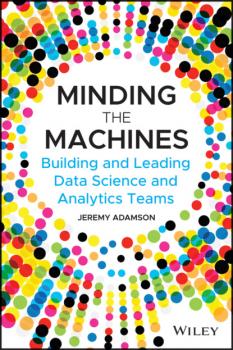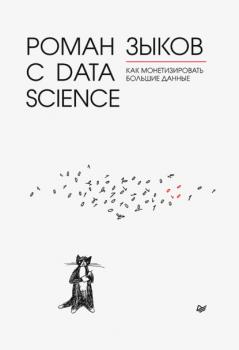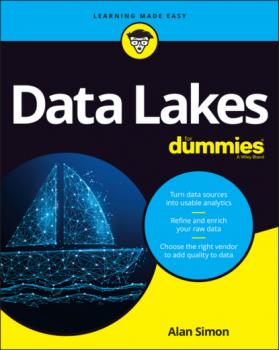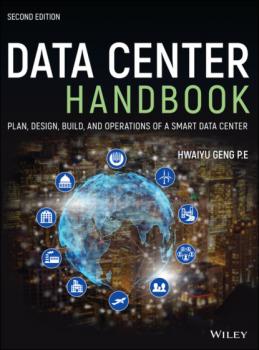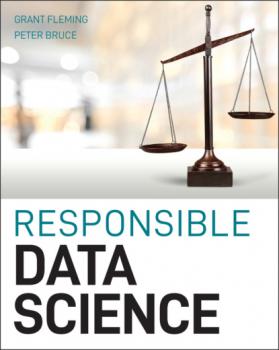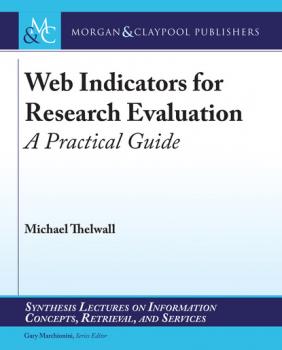Базы данных
Различные книги в жанре Базы данныхMinding the Machines
Organize, plan, and build an exceptional data analytics team within your organization In Minding the Machines: Building and Leading Data Science and Analytics Teams , AI and analytics strategy expert Jeremy Adamson delivers an accessible and insightful roadmap to structuring and leading a successful analytics team. The book explores the tasks, strategies, methods, and frameworks necessary for an organization beginning their first foray into the analytics space or one that is rebooting its team for the umpteenth time in search of success. In this book, you’ll discover: A focus on the three pillars of strategy, process, and people and their role in the iterative and ongoing effort of building an analytics team Repeated emphasis on three guiding principles followed by successful analytics teams: start early, go slow, and fully commit The importance of creating clear goals and objectives when creating a new analytics unit in an organization Perfect for executives, managers, team leads, and other business leaders tasked with structuring and leading a successful analytics team, Minding the Machines is also an indispensable resource for data scientists and analysts who seek to better understand how their individual efforts fit into their team’s overall results.
Data Lakes For Dummies
Take a dive into data lakes “Data lakes” is the latest buzz word in the world of data storage, management, and analysis. Data Lakes For Dummies decodes and demystifies the concept and helps you get a straightforward answer the question: “What exactly is a data lake and do I need one for my business?” Written for an audience of technology decision makers tasked with keeping up with the latest and greatest data options, this book provides the perfect introductory survey of these novel and growing features of the information landscape. It explains how they can help your business, what they can (and can’t) achieve, and what you need to do to create the lake that best suits your particular needs. With a minimum of jargon, prolific tech author and business intelligence consultant Alan Simon explains how data lakes differ from other data storage paradigms. Once you’ve got the background picture, he maps out ways you can add a data lake to your business systems; migrate existing information and switch on the fresh data supply; clean up the product; and open channels to the best intelligence software for to interpreting what you’ve stored. Understand and build data lake architecture Store, clean, and synchronize new and existing data Compare the best data lake vendors Structure raw data and produce usable analytics Whatever your business, data lakes are going to form ever more prominent parts of the information universe every business should have access to. Dive into this book to start exploring the deep competitive advantage they make possible—and make sure your business isn’t left standing on the shore.
Роман с Data Science. Как монетизировать большие данные
Как выжать все из своих данных? Как принимать решения на основе данных? Как организовать анализ данных (data science) внутри компании? Кого нанять аналитиком? Как довести проекты машинного обучения (machine learning) и искусственного интеллекта до топового уровня? На эти и многие другие вопросы Роман Зыков знает ответ, потому что занимается анализом данных почти двадцать лет. В послужном списке Романа – создание с нуля собственной компании с офисами в Европе и Южной Америке, ставшей лидером по применению искусственного интеллекта (AI) на российском рынке. Кроме того, автор книги создал с нуля аналитику в Ozon.ru. Эта книга предназначена для думающих читателей, которые хотят попробовать свои силы в области анализа данных и создавать сервисы на их основе. Она будет вам полезна, если вы менеджер, который хочет ставить задачи аналитике и управлять ею. Если вы инвестор, с ней вам будет легче понять потенциал стартапа. Те, кто «пилит» свой стартап, найдут здесь рекомендации, как выбрать подходящие технологии и набрать команду. А начинающим специалистам книга поможет расширить кругозор и начать применять практики, о которых они раньше не задумывались, и это выделит их среди профессионалов такой непростой и изменчивой области. Книга не содержит примеров программного кода, в ней почти нет математики. В формате PDF A4 сохранен издательский макет.
Темные данные. Практическое руководство по принятию правильных решений в мире недостающих данных
Человечество научилось собирать, обрабатывать и использовать в науке, бизнесе и повседневной жизни огромные массивы данных. Но что делать с данными, которых у нас нет? Допустимо ли игнорировать то, чего мы не замечаем? Британский статистик Дэвид Хэнд считает, что это по меньшей мере недальновидно, а порой крайне опасно. В своей книге он выделяет 15 влияющих на наши решения и действия видов данных, которые остаются в тени. Например, речь идет об учете сигналов бедствия, которые могли бы подать жители бедных районов, если бы у них были смартфоны, о результатах медицинского исследования, которые намеренно утаили или случайно исказили, или о данных, ставших темными из-за плохого набора критериев для включения в выборку. Хэнд также рассказывает о том, какие меры могут сгладить эффект темных данных и как их можно обратить себе на пользу.
Работа с данными в любой сфере
Книга озвучена с помощью искусственного интеллекта, специально разработанного для чтения аудиокниг. Что общего у аналитика данных и Шерлока Холмса? Как у Netflix получилось создать 100 %-ный хит – сериал «Карточный домик»? Ответ кроется в правильном использовании данных. Эта книга – практическое руководство и увлекательное путешествие в науку о данных, независимо от того, хотите ли вы использовать анализ данных в своей профессии, собираетесь ли стать аналитиком данных, или уже работаете в этой области. Ее автор, основатель образовательного онлайн-портала и консультант, Кирилл Еременко просто и понятно рассказывает об основных методах, алгоритмах и приемах, которые вам помогут на любом этапе: от сбора данных и их анализа до визуализации полученных результатов. Благодаря «Работе с данными в любой сфере» вы не только узнаете, как данные влияют на нашу жизнь (и как защитить свои данные), но и сможете расширить свои карьерные возможности.
Web Indicators for Research Evaluation
In recent years there has been an increasing demand for research evaluation within universities and other research-based organisations. In parallel, there has been an increasing recognition that traditional citation-based indicators are not able to reflect the societal impacts of research and are slow to appear. This has led to the creation of new indicators for different types of research impact as well as timelier indicators, mainly derived from the Web. These indicators have been called altmetrics, webometrics or just web metrics. This book describes and evaluates a range of web indicators for aspects of societal or scholarly impact, discusses the theory and practice of using and evaluating web indicators for research assessment and outlines practical strategies for obtaining many web indicators. In addition to describing impact indicators for traditional scholarly outputs, such as journal articles and monographs, it also covers indicators for videos, datasets, software and other non-standard scholarly outputs. The book describes strategies to analyse web indicators for individual publications as well as to compare the impacts of groups of publications. The practical part of the book includes descriptions of how to use the free software Webometric Analyst to gather and analyse web data. This book is written for information science undergraduate and Master’s students that are learning about alternative indicators or scientometrics as well as Ph.D. students and other researchers and practitioners using indicators to help assess research impact or to study scholarly communication.
